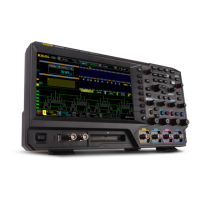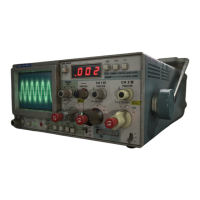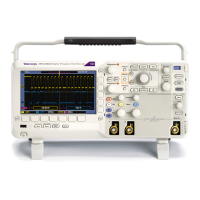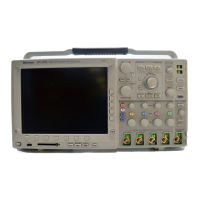How to ? Trigger on a logic state
Trigger on a logic state
Use the following procedure to trigger the instrument when all of the logic inputs to the selected logic
function cause the function to be True or False when the c lock (channel 4) input changes state.
1. Push the front-panel Advanced button.
2. In the Trigger control window, Open the A Event tab.
3. Select State from the Trigger Type drop-down list.
4. Select a value from the Input Threshold drop-down list for each data channel. The channel inputs
combine to form a logic pattern. Each channel can have a value of high (H), low (L), or "don't care"
(X). A value is considered high if the channel input voltage is greater than the specified threshold
voltage. A value is considered low if the channel input voltage is less than the specified threshold
voltage. Use the "don't care" selection for any channels that will not be used as part of the pattern.
NOTE. Ch
annels 1, 2, and 3 represent the data inputs. Channel 4 should be connected to the clock signal.
5. Select either the P OS (rising) or NEG (falling) edge for the Clock Channel (Channel 4).
6. To set the Input Threshold voltages, click one of the Threshold Presets buttons to define the level type.
If you selected USER, click in the Ch <1–4> entry b oxes, and then use the multipurpose knobs or
pop-u
pkeypadtoseteachthreshold.
7. Select the Pattern Type Boolean logic function for the combination of input channels. The instrument
will
trigger on a clock edge when the input waveforms match the s pecified logic pattern.
NOTE. See Pattern Triggers
(see page 649) for definitions of the logic functions for pattern triggers.
8. In
the Trigger if Logic State drop-down list, select True to trigger the instrument when the logic
patterns are true. Select False to trigger the instrument when the logic patterns are false.
TIP. For simplest operation, leave this control set to True. Setting the control to False complements the
output of the chosen pattern function (for example, from AND to NAND or NOR to OR).
9. Yo u can set the mode and holdoff for a ll standard trigger types. Refer to trigger mode (see page 389)
and set holdoff (see page 474) to learn more about trigger mode and holdoff.
650 DSA/DPO70000D, MSO/DPO/DSA70000C, DPO7000C, and MSO/DPO5000 Series

